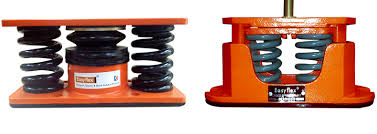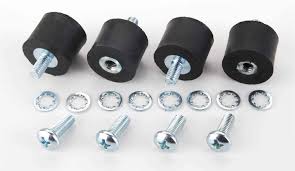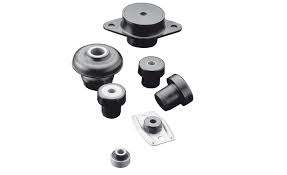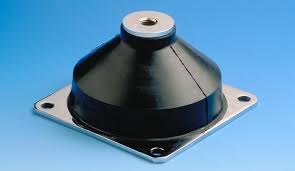الجمعة، 23 أغسطس 2024
تأسيس الشركات المساهمة: الخطوات الأساسية لإنشاء شركة ناجحة
تأسيس الشركات المساهمة: الخطوات الأساسية لإنشاء شركة ناجحة تعد تأسيس الشركات المساهمة من الخطوات الرئيسية لبدء أي مشروع تجاري ناجح، حيث تعتبر هذه الشركات هي البنية الأساسية للقطاع الاقتصادي في أي دولة. فتأسيس الشركات المساهمة يتطلب التخطيط والتطوير المستمر والعمل الدؤوب من قبل المؤسسين، حيث تتطلب هذه الخطوة الكثير من الدراسة والبحث قبل الشروع فيها. ومن هنا، سنقدم في هذا المقال الخطوات الأساسية والمفاهيم الهامة التي يجب اتباعها لتأسيس شركة مساهمة ناجحة.
تأسيس الشركات المساهمة يتطلب عدة خطوات أساسية لضمان نجاح الشركة واستمراريتها. بما أننا نريد تجنب الجملة الترحيبية، فإننا سنقدم معلومات مباشرة حول الخطوات الأساسية لإنشاء شركة ناجحة. 1. وضع رؤية واضحة: قبل بدء الشركة، يجب تحديد الرؤية والأهداف الرئيسية التي ترغب في تحقيقها. يجب أن تكون هذه الرؤية ملهمة وتحدد ما الذي تريد الشركة تحقيقه بالضبط. 2. اختيار نوع الشركة: يجب أن تقرر ما إذا كنت ترغب في تأسيس شركة مساهمة عامة أو خاصة. يعتمد هذا على الهيكل التنظيمي الذي تريده لشركتك وكيفية تمويلها. 3. تحديد الشركاء والمستثمرين: إذا كنت تخطط لتأسيس شركة مساهمة، فيجب عليك جذب شركاء ومستثمرين مهتمين بالمشروع ويشاركونك رؤيتك. 4. كتابة النظام الأساسي: يجب تحديد هيكل الشركة وكيفية إدارتها من خلال كتابة النظام الأساسي وتقديمه للسلطات المختصة للموافقة. 5. إتمام الاجراءات القانونية: بما في ذلك تسجيل الشركة، الحصول على تراخيص العمل، وتحديد الضرائب والرخص اللازمة. 6. تطوير خطة عمل شاملة: يجب وضع خطة عمل تفصيلية تشمل الأهداف المالية والتسويقية وإدارة الموارد البشرية وغيرها. 7. بناء الفريق: قم بتوظيف الأشخاص المناسبين ليكونوا جزء من فريقك ويساهمون في تحقيق رؤيتك. تأسيس الشركات المساهمة يتطلب الكثير من التخطيط والتنظيم، وإذا تم اتباع هذه الخطوات الأساسية بدقة، فمن الممكن أن تنجح الشركة وتزدهر على المدى الطويل.
أهمية تأسيس الشركات المساهمة في تطوير الاقتصاد

تأسيس الشركات المساهمة يعد أحد العوامل الرئيسية في تنمية الاقتصاد، حيث يساهم في جذب الاستثمارات وزيادة الفرص الوظيفية.
تأسيس الشركات المساهمة يعد أمرًا مهمًا جدًا في تطوير الاقتصاد لعدة أسباب. أولاً، تساهم الشركات المساهمة في خلق فرص عمل جديدة وتوفير مصدر دخل للكثير من الناس، مما يساهم في تحسين مستوى المعيشة للمجتمعات. كما أنها تشجع على الابتكار والإبداع في مجالات مختلفة مثل التكنولوجيا والصناعة والخدمات، مما يؤدي إلى تطوير الاقتصاد بشكل كبير. بالإضافة إلى ذلك، تلعب الشركات المساهمة دورًا كبيرًا في جذب الاستثمارات وتوفير الرأسمال اللازم لتمويل المشاريع الكبيرة والمبتكرة. وأخيرًا، تعمل الشركات المساهمة كمحرك رئيسي للنمو الاقتصادي وتساهم في زيادة الإنتاج والتصدير، مما يسهم في تعزيز الاقتصاد بالكامل.
الخطوات الأساسية لتأسيس شركة مساهمة ناجحة
خدمات تأسيس الشركات

لتأسيس شركة مساهمة ناجحة يجب اتباع خطوات محددة مثل اختيار النشاط التجاري المناسب وإعداد الوثائق القانونية المطلوبة.
لتأسيس شركة مساهمة ناجحة، يجب اتباع الخطوات الأساسية التالية: 1. دراسة السوق: قم بإجراء دراسة متأنية للسوق والصناعة التي ترغب في الدخول إليها، وتحليل المنافسين والعملاء المحتملين. 2. صياغة الخطة التجارية: قم بتحديد رؤية الشركة وأهدافها ووضع خطة عمل مفصلة تشمل الجوانب المالية والتسويقية والإدارية. 3. التأسيس القانوني: قم بتحديد الشكل القانوني للشركة كشركة مساهمة واتبع الإجراءات القانونية لتأسيسها وتسجيلها في الجهات المختصة. 4. تجهيز رأس المال: قم بتحديد رأس المال اللازم لبدء عمل الشركة وتأمينه من خلال مساهمات المساهمين. 5. البحث عن الشراكات: قم بالبحث عن شراكات استراتيجية مع شركات أخرى أو جهات حكومية أو مستثمرين لدعم نمو شركتك. 6. توظيف الكوادر البشرية: قم بتوظيف فريق عمل محترف ومؤهل لقيادة الشركة نحو النجاح. 7. التسويق والترويج: قم بتطوير استراتيجية تسويقية فعالة للوصول إلى العملاء المحتملين وزيادة حصة السوق. 8. الحفاظ على النمو: قم بمتابعة أداء الشركة وتحسين العمليات والخدمات المقدمة للعملاء لضمان استمرار نمو الشركة. هذه الخطوات الأساسية لتأسيس شركة مساهمة ناجحة تحتاج إلى التخطيط الجيد والتنفيذ الفعال لتحقيق النجاح المستدام.
تحديات تأسيس الشركات المساهمة وكيفية التغلب عليها

تأسيس الشركات المساهمة يواجهه تحديات مثل الصعوبات المالية والتشريعات القانونية، ولكن يمكن التغلب عليها من خلال التخطيط الجيد والابتكار.
تأسيس الشركات المساهمة يمثل تحديات كبيرة تتطلب الكثير من التخطيط والتحضير. أحد أبرز التحديات هو جمع رأس المال اللازم لتأسيس الشركة، وهذا يتطلب استخدام مختلف الأدوات والاستراتيجيات مثل جمع التبرعات، الاقتراض من البنوك أو وكالات الدعم الحكومية، ومراجعة تأسيس شركة مساهمة عامة أو خاصة. بعد ذلك، هناك التحديات المتعلقة بإدارة الشركة بفعالية وكفاءة، والحفاظ على نمو مستدام ونجاح العمل. يجب أن تقوم الشركة بتجاوز التحديات المتعلقة بالتنظيم وإدارة الموارد البشرية، وتحقيق ميزة تنافسية في سوق العمل عن طريق الابتكار والتسويق الفعال. لا بد أن يكون هناك تركيز كبير على بناء سمعة العلامة التجارية وتحسين العلاقات مع العملاء والشركاء التجاريين. ومن الضروري أيضًا الاستمرار في تحليل وتقييم الأداء لتحديد الفرص الجديدة ومواكبة التطورات في السوق. للتغلب على تحديات تأسيس الشركات المساهمة، يجب وضع خطة عمل دقيقة وتنفيذها بشكل صارم، والاستعانة بخبراء واستشاريين ذوي خبرة للحصول على النصائح والدعم المناسب. كما يجب أيضًا الاستفادة من الخبرات السابقة وتعلم الدروس من الأخطاء لضمان نجاح الشركة على المدى الطويل.
دور الحكومة في دعم تأسيس الشركات المساهمة
تلعب الحكومة دوراً هاما في دعم وتشجيع تأسيس الشركات المساهمة من خلال توفير البيئة القانونية المناسبة وتقديم الحوافز والدعم المالي.
تأتي دور الحكومة في دعم تأسيس الشركات المساهمة من خلال توفير مجموعة من الخدمات والبرامج التي تهدف إلى تشجيع ريادة الأعمال وتحفيز الاستثمار في القطاع الخاص. فعلى سبيل المثال، تقدم الحكومة الدعم المالي والضريبي للمشروعات الصغيرة والمتوسطة، وتوفر البيانات والمعلومات الاقتصادية الضرورية للمستثمرين ورجال الأعمال المحتملين. كما تقدم الحكومة الدعم القانوني والإداري لمساعدة الشركات المساهمة على الامتثال للتشريعات واللوائح الخاصة بالأعمال التجارية. وتعمل الحكومة أيضًا على توفير بيئة تشريعية واقتصادية مواتية لتأسيس الشركات وتشجيع الابتكار وريادة الأعمال.
أهم الاستراتيجيات لجذب المستثمرين لتأسيس الشركات المساهمة
لجذب المستثمرين لتأسيس الشركات المساهمة يجب أن تتبنى استراتيجيات مثل توفير البيانات المالية وتقديم فرص استثمارية مجزية.
هناك العديد من الاستراتيجيات التي يمكن استخدامها لجذب المستثمرين لتأسيس الشركات المساهمة، ومن أهمها: 1. تقديم خطة عمل متكاملة: يجب على المؤسسين القيام بإعداد خطة عمل شاملة توضح رؤيتهم وأهدافهم وكيفية تحقيقها بشكل مستدام. يجب أن تكون الخطة مدروسة ومؤثرة وتشمل تفاصيل حول السوق المستهدفة، والمنافسين، والتكنولوجيا المستخدمة، وغيرها من العناصر التي تساعد في إقناع المستثمرين. 2. تحديد استراتيجية تسويقية فعالة: يجب على المؤسسين التفكير في كيفية جذب المستثمرين المحتملين من خلال استراتيجيات تسويقية فعالة، مثل استخدام وسائل التواصل الاجتماعي، القيام بعروض تقديمية مؤثرة، والمشاركة في الفعاليات والندوات ذات الصلة. 3. تقديم بيانات مالية دقيقة: من المهم جدا أن يقدم المؤسسون بيانات مالية دقيقة توضح الاستثمار المطلوب وكيف سيتم استخدامه بشكل فعال. يجب أن تكون البيانات شافهة ومدروسة جيدًا لتكون مقنعة بالنسبة للمستثمرين. 4. بناء شبكة علاقات واسعة: يمكن للمؤسسين القيام ببناء شبكة علاقات قوية مع الأشخاص ذوي الخبرة في مجال الأعمال والاستثمار، والتعاون معهم للحصول على الدعم والتوجيه. هذه بعض الاستراتيجيات الأساسية التي يمكن استخدامها لجذب المستثمرين لتأسيس الشركات المساهمة.
الاختلاف بين الشركات المساهمة والشركات الخاصة والشركات العائلية
توجد اختلافات بين الشركات المساهمة والشركات الخاصة والشركات العائلية من حيث هيكلها التنظيمي وطريقة تملك الأسهم.
الشركات المساهمة هي الشركات التي يمتلك فيها المساهمون حصصاً في رأس المال، ويكون لديهم حقوق ومسؤوليات محددة. وتتمثل مزايا الشركات المساهمة في توسيع رأس المال والحصول على تمويل من خلال بيع أسهم الشركة. أما الشركات الخاصة فهي الشركات التي تمتلكها وتديرها شخص واحد أو مجموعة صغيرة من الأشخاص. تتميز الشركات الخاصة بسرعة اتخاذ القرارات ومرونة أكبر في الإدارة والتشغيل. أما الشركات العائلية فهي الشركات التي يتملكها ويديرها أفراد من عائلة واحدة أو أكثر. وتتميز الشركات العائلية بالاستقرار والرؤية طويلة المدى وتمرير الخبرات والمعرفة بين أفراد العائلة. باختصار، الاختلاف بين الشركات المساهمة والشركات الخاصة والشركات العائلية يكمن في هيكل ملكية الشركة وطريقة تمويلها وطريقة إدارتها.
أهم النصائح لرجال الأعمال الراغبين في تأسيس شركة مساهمة ناجحة
إذا كنت راغباً في تأسيس شركة مساهمة ناجحة يجب عليك مراعاة النصائح مثل اختيار شركاء موثوقين وإعداد دراسة الجدوى بدقة.
- تحديد الرؤية والأهداف الواضحة للشركة والتركيز على تحقيقها. - دراسة السوق وفهم احتياجات العملاء والمنافسين وتحليل الفرص والتهديدات. - اختيار فريق عمل متميز ومتخصص يساهم في نجاح الشركة. - وضع خطة عمل واضحة تشمل استراتيجيات التسويق والمبيعات والمالية. - الاستثمار في التكنولوجيا والابتكار لتحسين عمليات الشركة وتقديم خدمات مبتكرة. - الحفاظ على دقة في الأداء وتوجيه الشركة نحو النمو المستدام. - بناء علاقات قوية مع الشركاء والعملاء وتقديم خدمة عملاء ممتازة. - التزام بالنزاهة والأخلاقيات في كافة أنشطة الشركة. - مراقبة وتقييم أداء الشركة بانتظام واتخاذ الإجراءات اللازمة لتحقيق الأهداف المحددة.
التحديات القانونية لتأسيس الشركات المساهمة وكيفية التغلب عليها
تأسيس الشركات المساهمة قد يواجهه تحديات قانونية مثل الالتزام بالشروط والأنظمة القانونية، ولكن يمكن التغلب عليها من خلال الاستشارة القانونية المتخصصة.
تأسيس الشركات المساهمة يمكن أن يكون تحديا قانونيا بسبب العديد من الأمور، منها قوانين الشركات والضرائب والتشريعات الخاصة بالشركات وغيرها. من أبرز التحديات القانونية التي يمكن مواجهتها عند تأسيس الشركات المساهمة هي اتباع الإجراءات القانونية الصحيحة وتوفير الوثائق المطلوبة والامتثال لمتطلبات التشريعات المحلية. للتغلب على هذه التحديات القانونية، يجب على المؤسسين الاطلاع على القوانين والتشريعات المحلية المتعلقة بتأسيس الشركات والتأكد من اتباعها بشكل صحيح. كما يمكن الحصول على مساعدة من محامٍ متخصص في قانون الشركات لضمان الامتثال لجميع القوانين والتشريعات. هناك أيضا التحديات القانونية المتعلقة بتحديد نوعية الشركة المساهمة، وتحديد حقوق المساهمين والمسؤوليات المالية والقانونية لكل فرد داخل الشركة. يجب على المؤسسين دراسة جميع هذه النقاط بعناية والتأكد من اتباع الإجراءات القانونية المناسبة. باختصار، التحديات القانونية لتأسيس الشركات المساهمة تتطلب مراجعة دقيقة للقوانين والتشريعات المحلية والاستعانة بمحامٍ متخصص لضمان الامتثال لجميع القوانين واللوائح المعمول بها.
أهم الأسباب التي تجعل الشركات المساهمة خياراً جذاباً للمستثمرين
الشركات المساهمة تعتبر خياراً جذاباً للمستثمرين نظراً لتوزيع الأرباح وتبدأين الخسائر على المساهمين وتقليل المخاطر المالية.
- التنويع في ملكية الشركة: حيث يمكن للمستثمرين شراء أسهم في شركات مختلفة للتنويع في محفظة استثماراتهم. - الشفافية والاطلاع على المعلومات: تتطلب الشركات المساهمة الامتثال لمعايير الشفافية وإفصاح عن المعلومات المالية والإدارية بانتظام، مما يمنح المستثمرين فرصة للاطلاع على أداء الشركة واتخاذ قرارات استثمارية مستنيرة. - توزيع الأرباح: الشركات المساهمة توفر فرصة للمستثمرين للحصول على أرباح من خلال توزيع الأرباح السنوية أو توزيع أرباح الأسهم. - الحماية القانونية: تتمتع الشركات المساهمة بتشريعات تحمي حقوق المساهمين وتضع إجراءات لحماية مصالحهم. - سهولة البيع والشراء: يمكن للمساهمين بسهولة بيع أسهمهم في السوق المالية، مما يمنحهم سيولة وقابلية للتحويل.
دور الشركات المساهمة في دعم الاقتصاد المحلي وتوفير الوظائف
تأسيس الشركات المساهمة يساهم في دعم الاقتصاد المحلي وزيادة الفرص الوظيفية من خلال توفير الاستثمارات وتحفيز النمو الاقتصادي.
تعتبر الشركات المساهمة من العناصر الرئيسية في دعم الاقتصاد المحلي وتوفير فرص العمل. فهذه الشركات تسهم في توليد الدخل وتحفيز النمو الاقتصادي من خلال استثمار رأس المال في الأنشطة الاقتصادية المختلفة. كما تعمل هذه الشركات على توفير فرص العمل للسكان المحليين وتدريبهم لتطوير مهاراتهم ورفع مستوى الإنتاجية. وبالتالي، تسهم الشركات المساهمة في تعزيز النمو الاقتصادي وتعزيز الاستقرار المالي للمجتمعات المحلية.
في الختام، يُعتبر تأسيس الشركات المساهمة إجراءً حاسمًا لنجاح الأعمال التجارية، حيث تتطلب هذه الخطوة الأساسية التخطيط الجيد والاستعداد الشامل. وباعتبارها عملية معقدة تتضمن مجموعة من الإجراءات المتبوعة، يجب التأكد من اتباع الخطوات القانونية والمالية اللازمة لضمان نجاح الشركة. وعليه، فإن اتباع الخطوات الصحيحة في تأسيس الشركة المساهمة يمكن أن يضمن للمشروع الناجح بقاءه في السوق وتحقيق النجاح المستدام.
الجمعة، 2 أغسطس 2024
Exploring Various Types of Vibration Isolators for Mechanical Systems
Types of Vibration Isolators: Exploring Various Options for Mechanical Systems Vibration isolators are essential components in mechanical systems that help minimize the impact of vibrations on equipment and machinery. There are various types of vibration isolators available, each with its own unique features and capabilities. In this article, we will explore different types of vibration isolators and their applications in mechanical systems. We will discuss the advantages and disadvantages of each type, as well as the factors to consider when choosing the most suitable isolator for specific applications. By gaining a better understanding of the various types of vibration isolators, engineers and designers can make informed decisions to effectively protect their mechanical systems from the detrimental effects of vibrations.
Vibration isolators are mechanical devices that help reduce the transmission of vibration from one system to another. They are commonly used in a variety of applications including machinery, vehicle suspension systems, and building structures to prevent unwanted vibrations from causing damage or discomfort. There are several types of vibration isolators, each designed to address specific vibration problems. These include rubber mounts, springs, air springs, and elastomeric isolators. Each type of isolator has its own unique advantages and limitations, making it important to carefully consider the specific requirements of a particular application when choosing the most suitable type of isolator. Rubber mounts are commonly used for their cost-effectiveness and ability to provide isolation in a wide range of frequencies. Springs are another commonly used type of isolator, providing effective isolation at low frequencies. Air springs offer the advantage of adjustable stiffness and can provide isolation over a broad frequency range. Elastomeric isolators, made of rubber or similar materials, are particularly effective at isolating high frequency vibrations. Choosing the right type of vibration isolator for a given application requires a thorough understanding of the system's vibration characteristics and the specific needs of the equipment or structure. It's important to consider factors such as the frequency range of the vibration, the magnitude of the vibration forces, and the environmental conditions in which the system will operate. By exploring the various types of vibration isolators available and understanding their unique properties, engineers and designers can select the most appropriate solution to effectively mitigate the effects of vibration in mechanical systems.
Exploring various types of vibration isolators for mechanical systems involves understanding the different options available and their specific applications. Vibration isolators are crucial for reducing the transfer of vibration from one system to another. There are several types of vibration isolators, including rubber mounts, springs, air springs, and elastomeric isolators. Each type has its own unique advantages and limitations, making it essential to carefully consider the specific requirements of an application when choosing the most suitable isolator. Rubber mounts are cost-effective and provide isolation across a wide range of frequencies. Springs are effective at isolating low frequencies, while air springs offer adjustable stiffness and can provide isolation over a broad frequency range. Elastomeric isolators, made of rubber or similar materials, are particularly effective at isolating high frequency vibrations. The selection of the right type of vibration isolator hinges on a thorough understanding of the system's vibration characteristics, the specific needs of the equipment or structure, and environmental conditions. Factors such as the frequency range of the vibration, the magnitude of the vibration forces, and the operational environment need to be carefully considered. By exploring the various types of vibration isolators and understanding their unique properties, engineers and designers can select the most appropriate solution to effectively mitigate the effects of vibration in mechanical systems. This enables the optimal performance and longevity of machinery, vehicle suspension systems, and building structures.
Understanding the Importance of Vibration Isolators in Machinery

Vibration isolators are essential components in machinery as they play a crucial role in reducing the transmission of noise and vibration. They help to protect sensitive equipment from damage by isolating it from the base structure, thereby minimizing the impact of external vibrations. By absorbing and dissipating vibrations, isolators also enhance the performance and longevity of machinery while reducing maintenance costs. Furthermore, they improve workplace safety by eliminating the risk of structural damage and potential hazards associated with excessive vibration. Overall, understanding the importance of vibration isolators in machinery is vital for optimizing equipment operation and ensuring a productive and safe working environment.
Comparing Different Types of Vibration Isolators for Industrial Equipment
vibration isolator selection guide

The most common types of vibration isolators for industrial equipment are elastomeric, air spring, and spring isolators. Elastomeric isolators use rubber or synthetic materials to absorb and dampen vibrations, providing good isolation for high-frequency vibrations. Air spring isolators use air chambers to provide a cushioning effect and are often used for equipment with varying loads. Spring isolators work by using metal coils to absorb and disperse vibrations, and they are effective for isolating low-frequency vibrations. Each type of isolator has its own benefits and drawbacks, and the choice of isolator depends on factors such as the frequency and amplitude of the vibrations, the weight and size of the equipment, and environmental conditions. It is important to carefully consider these factors when selecting the appropriate vibration isolator for industrial equipment to ensure optimal performance and longevity.
The Role of Vibration Isolators in Reducing Noise and Vibration in Vehicles

Vibration isolators play a crucial role in reducing noise and vibration in vehicles. These components are designed to absorb and dampen the vibrations caused by the movement of the vehicle, as well as the operation of the engine and other mechanical systems. By effectively isolating these vibrations, the isolators help to minimize the amount of noise and vibration that is transmitted to the vehicle's occupants, resulting in a smoother and quieter ride. Additionally, vibration isolators can also help to prevent damage to sensitive electronic components and other vehicle systems that may be negatively affected by excessive vibration. Overall, the use of vibration isolators is essential in creating a more comfortable and enjoyable driving experience for both passengers and drivers.
Selecting the Right Vibration Isolators for Electronic Devices and Components
building vibration isolation

When selecting the right vibration isolators for electronic devices and components, it is important to consider factors such as the weight and size of the equipment, the frequency and amplitude of the vibrations, and the specific requirements for isolation. It is also important to consider the environment in which the equipment will be operating, as well as any regulatory or industry-specific standards that may apply. There are a variety of vibration isolators available, including rubber mounts, springs, and air springs, each of which has its own advantages and limitations. Rubber mounts are often effective for reducing high-frequency vibrations, while springs are better suited for lower frequency vibrations. Air springs can provide a high level of isolation over a broad frequency range. It is important to carefully consider the specific requirements of the electronic device or component in order to select the most appropriate vibration isolators. This may involve consulting with a vibration isolation specialist or engineer, and conducting thorough testing and analysis to determine the most effective solution. Additionally, it is important to consider the long-term maintenance and durability of the chosen isolators to ensure continued effective performance over time.
Exploring the Benefits of Rubber Vibration Isolators in Construction Equipment
Rubber vibration isolators in construction equipment are crucial for reducing the impact of vibrations and shocks on the machinery. By isolating the equipment from ground vibrations, rubber isolators protect the equipment from wear and tear and prevent damage to sensitive components. Additionally, they can help improve the overall operator comfort and reduce noise levels. Rubber isolators are versatile and can be used in various construction equipment such as excavators, bulldozers, cranes, and compactors. They are cost-effective, easy to install, and provide long-lasting benefits for construction equipment.
The Impact of Air Spring Vibration Isolators on Heavy Machinery Performance
The Impact of Air Spring Vibration Isolators on Heavy Machinery Performance is significant in minimizing the transmission of vibration and shock to the machine and surrounding environment. These isolators help to reduce wear and tear on the machinery and improve overall efficiency by providing a stable and cushioned environment for the equipment to operate in. By effectively isolating the vibrations, air spring isolators can enhance the reliability and longevity of heavy machinery, ultimately optimizing its performance.
The Use of Spring Mount Vibration Isolators in HVAC Systems for Buildings
Spring mount vibration isolators are commonly used in HVAC systems for buildings to minimize the transmission of vibrations from the equipment to the structure. These isolators consist of spring elements that provide flexibility and absorb and isolate vibrations. They are typically installed between the equipment and the building structure to reduce noise and prevent damage to the building. In HVAC systems, spring mount vibration isolators are used for various components such as pumps, fans, chillers, and air handling units. They are designed to support the weight of the equipment while providing isolation from vibrations caused by operation. This helps to improve the overall performance of the HVAC system, enhance occupant comfort, and prolong the lifespan of the building structure. The use of spring mount vibration isolators in HVAC systems is crucial for maintaining a comfortable and quiet indoor environment. By effectively reducing vibrations and noise, these isolators contribute to a better working and living environment in commercial, industrial, and residential buildings. Additionally, they help to ensure the structural integrity of the building by minimizing the impact of vibrations on the surrounding components and materials.
Innovative Materials and Designs for Modern Vibration Isolators
Innovative materials and designs for modern vibration isolators include the use of advanced polymers, such as polyurethane and silicone, to improve performance and durability. These materials offer superior damping properties, increased resistance to environmental factors, and the ability to withstand high loads. Additionally, modern vibration isolator designs incorporate features such as integrated damping systems, adjustable stiffness, and multiple degrees of freedom to provide precise control over vibration and shock. Advanced computer-aided design and simulation techniques are also utilized to optimize the performance of vibration isolators for specific applications. Furthermore, the use of additive manufacturing and 3D printing technologies allows for the production of complex geometries and customized designs, resulting in more efficient and effective vibration isolation solutions. Overall, the continuous advancement of materials and designs for modern vibration isolators has led to improved performance, reliability, and versatility in a wide range of industrial and mechanical systems.
In conclusion, the exploration of various types of vibration isolators for mechanical systems has demonstrated the importance of selecting the appropriate isolator for specific applications. Whether it is a rubber mount, spring isolator, or a viscous damper, the choice of isolator has a significant impact on the overall performance and longevity of mechanical systems. It is crucial to consider factors such as frequency, amplitude, and load capacity in order to effectively mitigate vibration and ensure the smooth operation of equipment. By understanding the different types of vibration isolators available, engineers and designers can make informed decisions to optimize the performance and reliability of mechanical systems.
See also
https://www.isotechinc.com/vibration-isolators/ https://www.kineticsnoise.com/seismic/









